International Production Suddenly Looks More Attractive

Okay, 2020 was tough!
Sure, we watched Outbreak and Contagion last year, but no one really took this whole pandemic thing serious until mid-to-late March when Tom Hanks announced he and his wife, Rita Wilson, tested positive for COVID-19 while he was in Australia filming an Elvis Presley biopic.
Suddenly, people were saying, “Holy S*** this stuff is real…and serious!”
At about the same time, folks around the globe were sent home to work, wherever and however.
BAM! studios went dark, borders were closed.
With the exception of reality and late-night TV, entertainment production was in a deep freeze … paralyzed.
Box office revenues sunk to zero, the film supply got shifted, theaters closed.
According to Statista, an estimated 1M M&E workers were suddenly out of work.
The coronavirus pandemic crippled production around the world and it started to feel like it was maybe going to be forever.
Business slowed to interacting on a Zoom screen, wreaking havoc on film and TV production schedules.
It moved the industry to reconsider the stories that were being told, how/where they were being made and how they were being delivered.

In addition to being eager to get project production back on track, the industry’s forced hiatus gave it an opportunity to step back and review its methods/processes and the cost of production which has ballooned in recent years.
While film production was cautiously beginning to see a thaw abroad, the US continued to be in a deep fog.
The lack of a U.S.-wide policy/program on how to address the virus, contain it, provide adequate testing, integrate national safety/health guidelines or implementation mandates due to there being only a glimmer of a vaccine put the industry between a rock and a hard place.

If they weren’t there already, producers began to look at international options as country leaders made hard calls to control the pandemic in their country and put their economies back on track … slowly, safely.
Okay, let’s be fair about this. International production was rising in popularity even before the pandemic because of the construction of new, more advanced studio facilities, investment in enhanced technology and ready availability of skilled creative production personnel.
Attractive tax rebates and intelligent project underwriting insurance support only sweetened the offer.
Meanwhile, there seemed to be an apparent lack of interest by the government supporting the US creative content industry, which has long been a major hurdle for studios, content owners. This despite the fact that M&E production in the US employs more than 350K people and most recently produced an estimated $139B in sales.
Insurance has always been a critical issue and it was compounded for those who wanted to return to production following the recent pandemic lockdown.
“Many countries, especially those that opened early for movie and TV production adopted a variety of stage/crew production guidelines as well as revised financial incentives that were supportive and beneficial,” said Allan McLennan, PADEM Media Group chief executive.
“That meant it was a straight-forward decision for studios/producers to adjust, modify and relocate their project productions, especially if it enabled them to keep on schedule as best they could and keep their financing on track,” he added.

While theaters were opened then closed several times during the first, second, third waves of the pandemic; people were still hesitant to experience films the way producers wanted their projects to be seen and many box office trackers estimate that it will take until 2022 before ticket sales “recover.”
“It is a catch-22 situation,” McLennan said. “Throughout 2020, theaters have done a herculean job – increasing sanitation practices, new air filtration, distancing, requiring masks, everything but great content.
“With ticket sales now running at 10-20 percent of theater capacity (on a good day), studios are questioning what their best path is to present their new film and are considering other options and release windows to capture ticket sales,” he continued. “And according to Morning Consult, a global data intelligence company, only about 22 percent of consumers will be comfortable returning to theaters any time soon which only further complicates the situation at this stage.
“Studios and content owners are evaluating how long they should wait for the consumers to return. They’re looking at offering their new content via streaming services where people are being entertained today because it could prepare a new support model for theatrical releases,” he added.
Even before the pandemic, OTT had become an inviting way for studios, content owners and networks to improve their connections with consumers with less reliance on Pay TV and … movie houses.
Netflix with more than 200M global subscribers in 190 plus countries and Amazon Prime with 150M members worldwide and most recently Disney + with nearly 90M subscribers in more than 30 countries have proven that people are willing to subscribe to content services to enjoy a wide selection of quality content when they want and on the screen they want.
The three houses were already producing content in countries around the globe as a result of country service agreements which mandated that they had to produce 30-plus percent of their content locally.
It turns out that was a good thing because locals not only liked the films/shows but folks elsewhere also found them entertaining whether they were dubbed or subtitled.
Good content travels well!
Film/show producers and crews can adapt to any location and the US teams eagerly proved it in 2020 by taking all of the restrictions and requirements in stride.
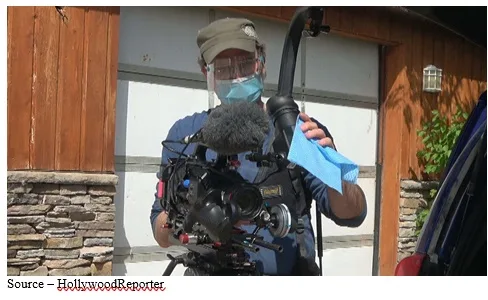
Canadian production had just come off a record-breaking year ($2.16B in Ontario, British Columbia had a record year, Quebec racked up more than $2B) when the pandemic hit so they were able to weather the several waves of infection better than their southern neighbors.
Setting rigid requirements for projects that fled north of the border, the Canadian production industry experienced few outbreaks and quickly isolated them so by the first of the year, they were back working at near-full capacity.
The country’s independent film/TV production sector was well prepared to meet the global demand for the high-quality, original content. Projects that already had production insurance in place were able to return to work following the new cautionary measures and protocols.
Projects quickly turned to Canada for completion assistance–especially when Alberta announced a 48-hour quarantine program rather than the normal two-week isolation. The Canadian efforts were instrumental in helping production teams get their insurance rather than have to wait several months for relief, rely on in-house policies or adhere to strict policies, depopulate the set and hope for the best.
B.C. had more than 60 projects at the first of the year including 22 TV series produced by CBS, Netflix, Disney, Amazon, Warner and ABC.
In addition 6 feature films, 10 new media projects and 23 TV movies are in the works including Batwoman, DC Legends of Tomorrow, Charmed, Nancy Drew, Riverdale, The Flash, Supergirl, Van Helsing, A Million Little Things, The Mighty Ducks, Midnight Mass, Lost in Space and Supernatural, as well as other large and small projects.
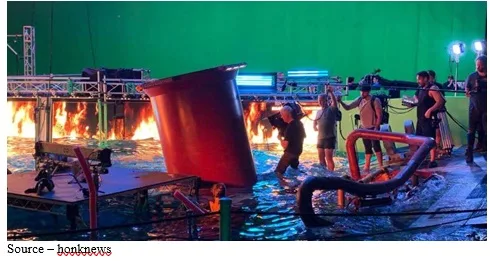
One of the industry’s most progressive/aggressive country commissions – The New Zealand Film Commission – understands the positive impact of the industry on the country’s economy. Containing the outbreak and keeping foreign production rolling as much as possible remains important, given that the foreign productions are injecting 3,000 jobs and US$262 million into the country.
At the outset of the pandemic, New Zealand’s PM, Jacinda Ardirna, shut down non-essential businesses, closed the borders and more. As a result, projects only suffered minor production schedule setbacks.
Professionals who had to enter the country had to quarantine for two weeks and test negative before they could work on the projects but the restrictions and governmental cooperation kept major and minor projects including Avatar, Lord of the Rings, Power Rangers Sweet Tooth, Cowboy Bebop, The Greatest Beer Run Ever and others on budget.
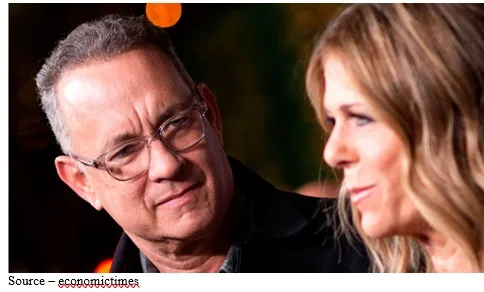
In addition to Tom Hank’s Elvis biopic being shutdown (production resumed in October), more than 120 projects were shut down or canceled, costing the Australian production industry an estimated $2B.
The country’s production guidelines enabled work to resume mid-year on projects including Shang-Chi and the Legend of the Ten Rings, The Bachelor Australia, Neighbors, Thor: Love and Thunder and others.
To attract and stimulate more film and TV production, the government added $291M in incentives to its existing 30 percent budget offset.
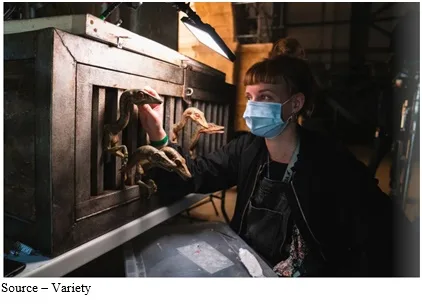
Working closely with unions and industry groups, the BFC (British Film Commission) had a 26-page set of proposals for restarting TV and film production last summer.
While the fact that Tom Cruise’s M:I 7, 8 received the most “star attention” when they returned to Leavesden Studios in England, Jurassic World Dominion received the most production attention because it was one of the first projects to be produced under new production health/safety guidelines.
Despite intense efforts to keep the British Pinewood Studio’s crew cast coronavirus-free, they still suffered a couple of infection setbacks. The health protocols added about $5M to the project budget.
All of the studios including Disney, Netflix and Warner have locked down major long-term soundstage leases to ensure production capacity over the next couple of years.
In addition to expanded facilities from every major studio, England has some of the most advanced independent studios in the world which has resulted in an annual income to the government of more than $4.8B annually.
To support the industry, the country has a $647M insurance fund for film and TV production providing 50 percent of the project budget is spent in the U.K. As a result, a number of projects have relocated to England including The Serpent, Batman and other major and secondary films and TV series.

Film commissions across Europe including Italy, Germany, Spain, France, Czech Republic, Slovakia, Hungary and Poland all developed and promoted safe production guidelines and activities as well as new incentive programs as well as the quality of their infrastructure and depth of production crew expertise.
This was in addition to maintaining local TV and film production projects with minimum crews, the elimination of close contact activities such as kissing/hugging and added location incentives as well as aggressive programs to manage and control the virus.
While Iceland experienced only a slight “slow down” of video story production because of rigid testing and quarantine activities, the country maintained a steady project flow thanks to insurance coverage to all local productions.
Outside production in China remained “modest” during the pandemic because of visa suspensions and the requirement of a letter of invitation from the government.
Restrictions are only now slowly being eased.
South Korea has been as cautious in controlling the pandemic and providing filming guidelines as has New Zealand. As a result, they minimized lockdown issues and project suspensions.
India’s foreign project production came to a virtual stop last March.
The combination of issues and because each of the country’s 36 states/territories is independent with each establishing its own entry and project production requirements, it has been extremely difficult for new projects to begin.
As if Covid issues weren’t bad enough, Bollywood and Nollywood also suffered from internal strife and uprisings making studios and producers reluctant to take on yet another obstacle.
Most foreign producers believe it will take several years for the issues to be resolved so projects can return.
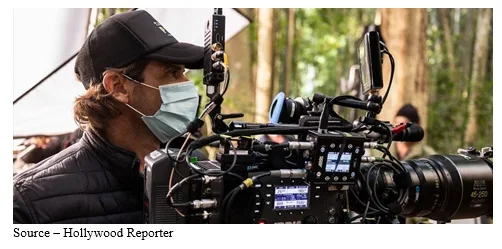
Rather than previous multi-country work, studios and producers are focusing on more controllable spaces (studios, single locations) to help deliver projects quickly, economically and safely.
“The lessons learned, and project management refinements will become the new norm for at least the next three-to-five years,” McLennan noted. “Countries and studios have found that they can rethink and rework projects with single locations, minimal crews and team/actor rotation to develop and deliver a quality product without some of the earlier lavish budgets.
“It has been an eyeopener for everyone involved in film and TV content production;, but like all challenges, there are benefits being identified and new processes implemented to meet the demand and keep the productions economically and efficiently rolling,” he added.
 But to keep things in perspective, Polly Perkins in Sky Captain and The World of Tomorrow noted, “It’s only a movie, Mr. Paley. I’ll bring you some popcorn.”
But to keep things in perspective, Polly Perkins in Sky Captain and The World of Tomorrow noted, “It’s only a movie, Mr. Paley. I’ll bring you some popcorn.”
# # #
Andy Marken – [email protected] – is an author of more than 700 articles on management, marketing, communications and industry trends in media & entertainment, as well as consumer electronics, software and applications. An internationally recognized marketing/communications consultant with a broad range of technical and industry expertise in storage, storage management and film/video production fields; he has an extended range of relationships with business, industry trade press, online media and industry analysts/consultants.